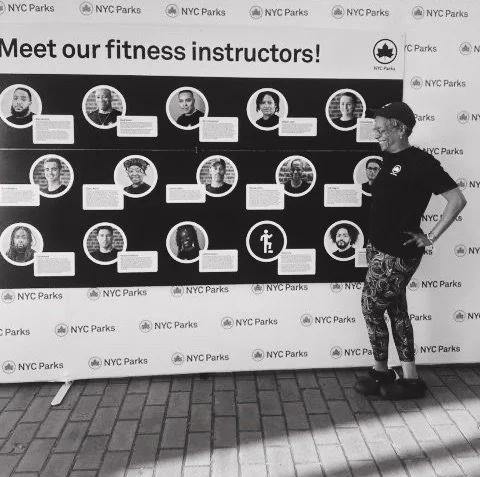the practice of being less afraid
For the past two years, Michele’s class at the Northeast Bronx YMCA has become an anchor in my week. When I first walked into her class, I’d been away from yoga for a while and felt intimidated about returning. I’ve practiced in different studios, but the tone Michele sets is unlike any other space I’ve been in: intentional, welcoming, and deeply grounding.
Michele, founder of Yoga Awareness and Movement Studios and Retreats, is now a beloved part of my Sunday routine. Her classes offer me both stillness and challenge, without ever asking me to compromise authenticity or feel afraid of where I am in my own practice. That’s why I knew I wanted her to be the very first feature in our Stillness series for The Bronx Brownstone. More here:
Your path to teaching yoga wasn’t linear. How did you get here?
I’ve always been involved in fitness, working at gyms, studying health in college, but life took me in a different direction for a while. When I became a mom, I needed stability and started working for the city. I spent years at the Sheriff’s Office and then Parks & Recreation, doing operations work. It was steady, but not as creative as I wanted.
During that time, I went through a tough season personally, and a friend invited me to a retreat at Kripalu in Massachusetts. That trip in 2006 changed everything. I kept going back year after year until, in 2018, I finally committed to yoga teacher training. I graduated in 2019, and then COVID hit.
Strangely, that turned out to be a blessing. I used the time to get my 500-hour advanced certification, taught virtually, even held classes on the beach. When the world reopened, I came back to the Bronx ready to teach in person. Every pivot brought me closer to what I was meant to do.
Your classes feel welcoming to every body, which isn’t always the case in yoga. How did you design your approach?
When I was in training at Kripalu, I was the only Black woman in the room. That told me right away that I needed to bring my full, authentic self into the space. I grew up in Brooklyn, I’ve lived in the Bronx for 30 years, and I love music and movement. So I layer all of that into my teaching. My first students included people with cognitive disabilities, older bodies, and larger bodies. I wanted them to feel like yoga was for them, because it is.
Sometimes it starts with music. When people hear a song that makes them smile, they stop worrying about what they “can’t do” and start moving. From there, the practice opens up.
You have this incredible ability to set the tone in class. How do you prepare yourself before you teach?
For me, it starts with music - I’ll turn it on before class and move around until I feel grounded. Sometimes I come in with a prepared sequence or flow, but often I just read the energy of the room.
I also have boundaries that I hold for my students, whether it’s starting on time or creating space for both newcomers and regulars. I think people respect that. Boundaries aren’t rigid; they’re what allow the room to feel safe enough for everyone to relax into their practice.
You’re known for saying “Get off the bus” during class. Where did that come from?
That phrase comes from one of my teachers, Michelle Dalbec. She’d say it whenever we were forcing a pose or pushing too hard, “Get off the bus. Another bus is coming.” It stuck with me, and now my students say it to each other. It’s such a powerful reminder that you can pause, take a breath, and rejoin the flow when you’re ready.
Yoga isn’t about perfect poses; it’s about presence. In my experience, when people start to move, they’re less afraid of what they can’t do. That lesson has a way of following you off the mat. So when you hear “get off the bus” in class, it’s not just about the yoga, it’s an invitation to be gentle with yourself, to slow down, and to remember there’s always another chance to begin again.
What’s on your go-to class playlist?
I have to start with Eric B. & Rakim, “Paid in Full.” Heavy beats, heavy bass, that positive energy that says, “We’re moving from the hard stuff into the good stuff.” And then there’s Tina Turner. Her later years, her chanting, there’s such a soulfulness to it. Her voice brings me back to center every time.
